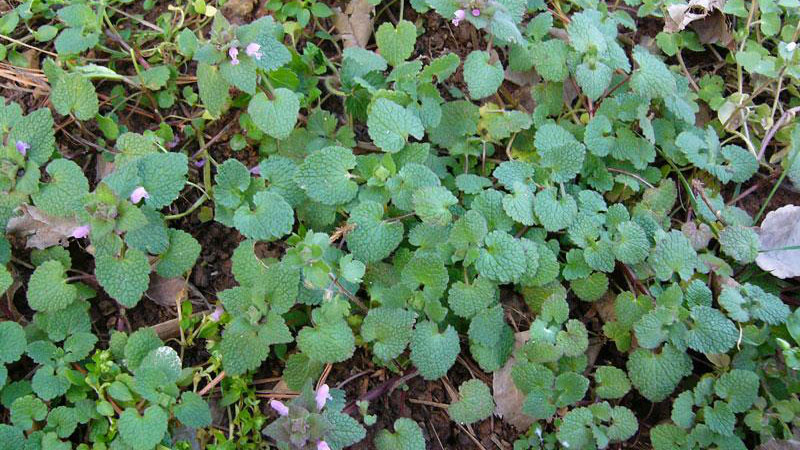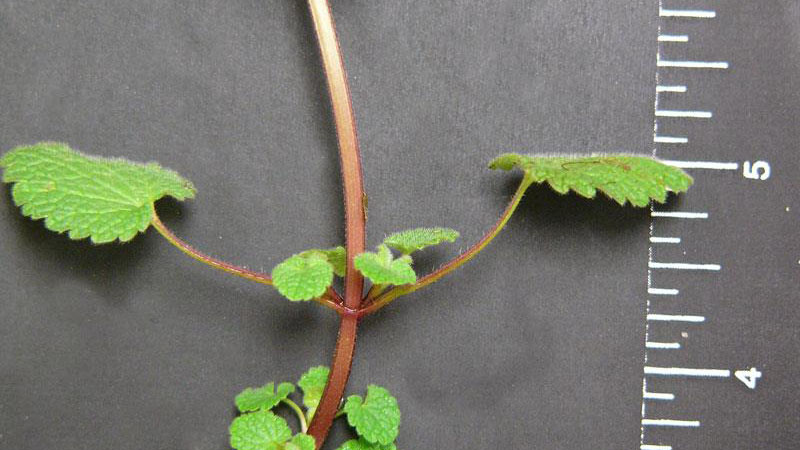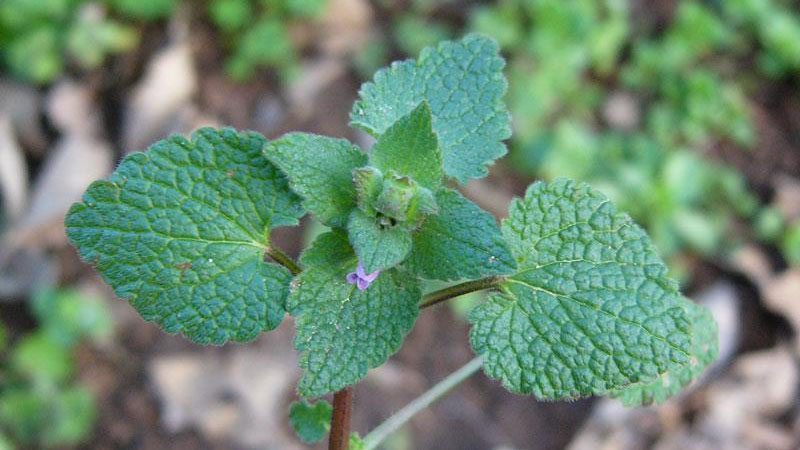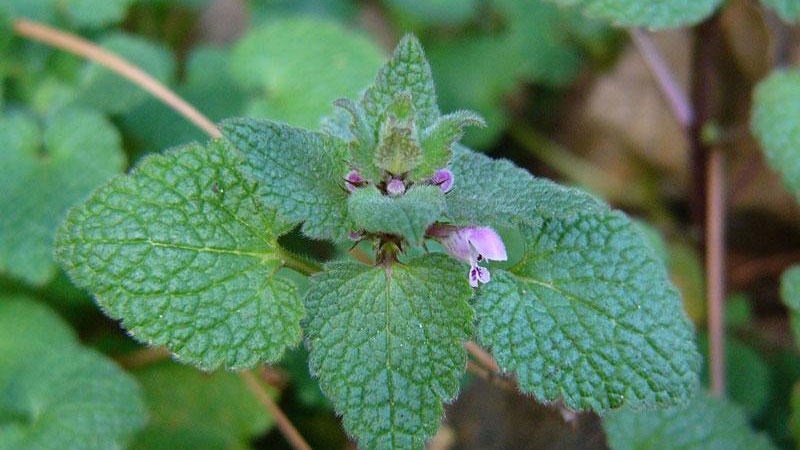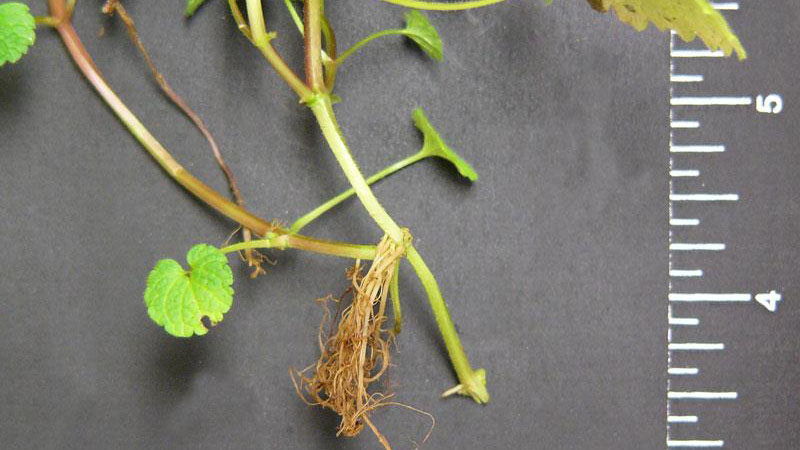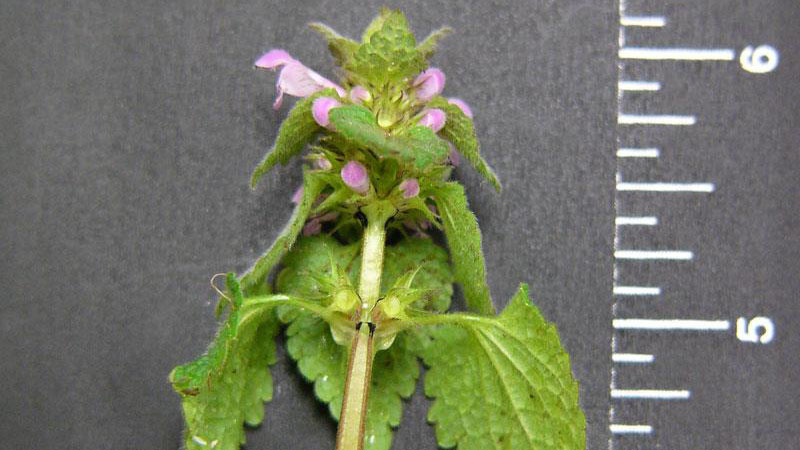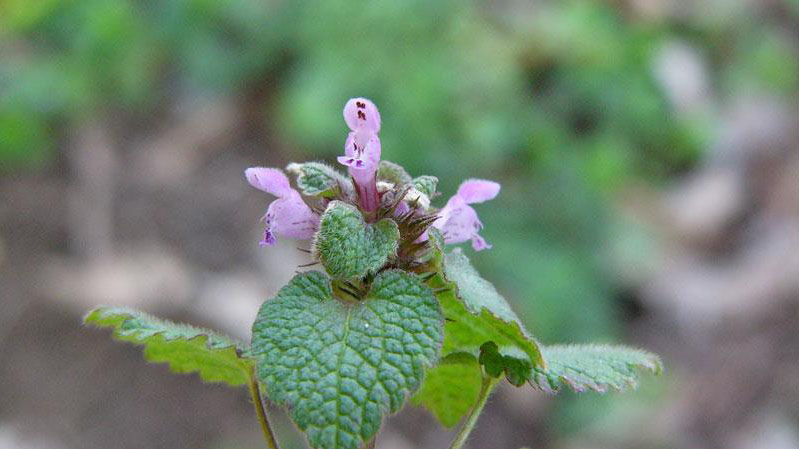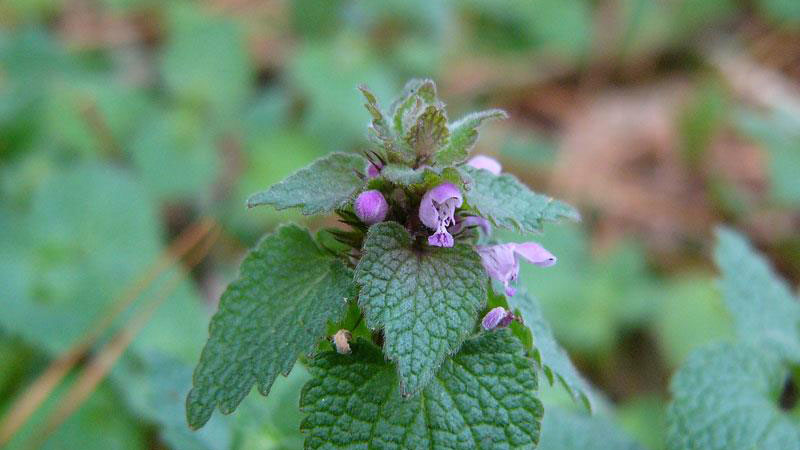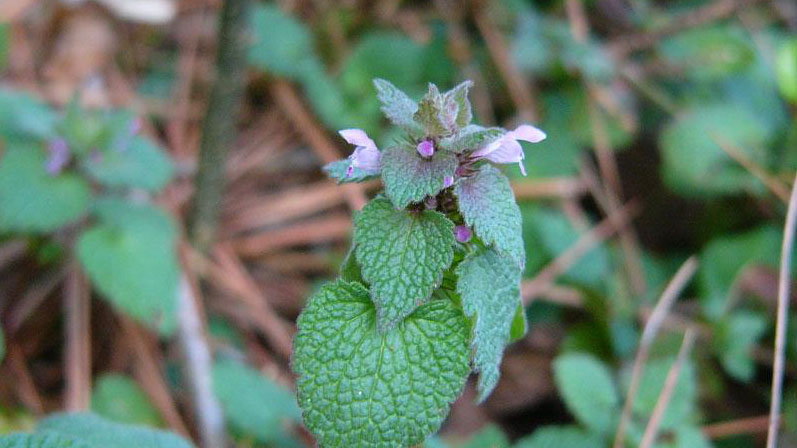Description
Purple deadnettle (Lamium purpureum) is a common winter annual weed found in North Carolina waste areas. It is similar to henbit in appearance but its upper leaves have short petioles and the lower leaves have long petioles, whereas henbit lacks petioles. Purple deadnettle also has upper leaves that are distinctly red- or purple-tinged. Purple deadnettle and henbit both have distinctive four-sided (square) stems, and flower in early spring.
Cultural Control
Winter annual broadleaf weeds germinate in the fall or winter and grow during any warm weather, which may occur in the winter, but otherwise remain somewhat dormant during the winter. They resume growth and produce seed in the spring and die as temperatures increase in late spring and early summer. They quickly invade thin turf areas especially where there is good soil moisture. Shade may also encourage growth. Many have a prostrate growth habit and are not affected by mowing. A dense, vigorous turf is the best way to reduce the encroachment of winter annual weeds. First, select adapted turfgrass cultivars for your area and then properly fertilize, mow, and water to encourage dense growth.
Chemical Control
| Herbicide and Formulation | Amount of Formulation per 1,000 sq ft | Amount of Formulation per Acre | Pounds Active Ingredient per Acre |
| Preemergence and Postemergence Control | |||
| mesotrione, MOA 27 (4 SC) (Tenacity) | 0.092 to 0.183 fl oz | 4 to 8 fl oz | 0.125 to 0.25 |
| Precaution and Remarks: Use on residential turf, golf courses (not greens) and sod farms for pre- and postemergence weed control. Tolerant turfgrasses include St. Augustinegrass, centipedegrass, tall fescue, fine fescue, Kentucky bluegrass, and perennial ryegrass. Add a nonionic surfactant and repeat application after 2 to 3 weeks for improved postemergence control. Tank mix with prodiamine 65 WG for extended preemergence grassy weed control. Can be applied at seeding to all tolerant grasses except fine fescue. After turf germination, wait 4 weeks or until turf has been mowed twice before making a postemergence application. Also controls henbit, chickweed, dandelion, white clover, Florida betony, Florida pusley, ground ivy, oxalis, wild violet, creeping bentgrass, and yellow nutsedge. | |||
| [sulfentrazone + prodiamine], MOA 14 + 3 (4 SC) (Echelon) | 0.184 to 0.826 fl oz | 0.5 to 2.25 pt | 0.25 to 1.125 |
| Precaution and Remarks: For use in residential and institutional lawns, athletic fields, sod farms, golf course fairways and roughs, roadsides, utility right-of-ways, railways, and industrial areas. Apply to turf following a second mowing if a good root system has been established. Apply up to 12 fluid ounces per acre to bentgrass at 0.5 inch or higher, fine fescue, and perennial ryegrass. Apply 18 to 24 fluid ounces per acre to perennial bluegrass, tall fescue, and all warm season grasses except St. Augustinegrass (do not apply) and bermudagrass (apply 18 to 36 fluid ounces per acre). For sod production, apply 6 months after establishment, and do not harvest within 3 months. Do not apply with adjuvants or surfactants. [Sulfentrazone + prodiamine should not be applied to cool-season turf with N-containing fertilizers unless some short-term discoloration is tolerable. | |||
Species Data
- GROWTH SEASON / LIFE CYCLE
- winter annual weed
- GROWTH HABIT
- prostrate, but erect at the tip
Figure 1
- prostrate, but erect at the tip
- LEAFLET NUMBER
- one
- LEAF MARGIN
- serrated/toothed
Figure 2
- serrated/toothed
- LEAF HAIRS
- upper/lower surface
Figure 3
- upper/lower surface
- LEAF / LEAFLET SHAPE
- broadly egg-shaped, round; leaves often red- or purple-tinged
Figure 4
- broadly egg-shaped, round; leaves often red- or purple-tinged
- LEAF WIDTH
- 1⁄2 - 1 inch
- LEAF VENATION
- palmate
- LEAF ARRANGEMENT
- opposite
Figure 5
- opposite
- ROOT TYPE
- fibrous
Figure 6
- fibrous
- FLOWER COLOR
Publication date: Nov. 20, 2017
N.C. Cooperative Extension prohibits discrimination and harassment regardless of age, color, disability, family and marital status, gender identity, national origin, political beliefs, race, religion, sex (including pregnancy), sexual orientation and veteran status.

